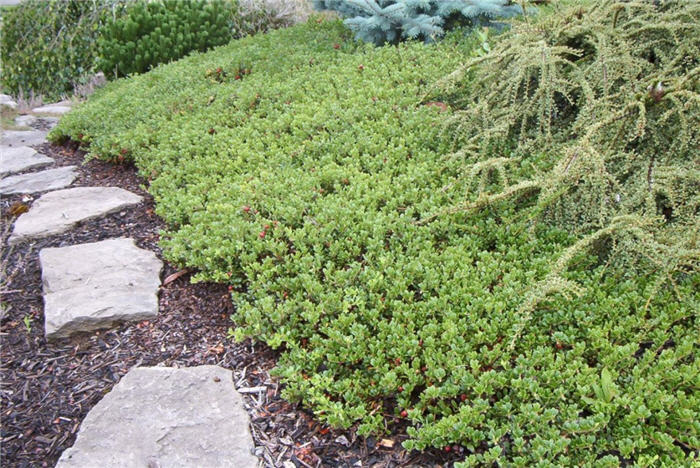| Botanical Name: Arctostaphylos uva-ursi 'Massachusetts' | |
| Common Name: Common Bearberry |

-
Anatomy
-
Culture
-
Design
Plant Type
Broadleaf Evergreen, Shrub, Ground cover
Height Range
Under 1'
Flower Color
Pink, White
Flower Season
Spring
Leaf Color
Dark Green
Bark Color
Grey, Red
Fruit Color
Red
Fruit Season
Summer, Fall
Information by: Stephanie Duer
Photographer:
Photographer:
-
Description
-
Notes
This winter hardy, prostrate, slow-growing, evergreen shrub or ground cover will typically grow to 6 to 12" high and 3 to 6' wide. In the proper environment, bearberry can spread (by stem rooting) to cover a very large area of up to 15' in diameter. Reddish-gray, peeling bark and small, lustrous, dark green leaves which turn reddish brown in winter. Nodding white-tinged pink, heather-like flowers appear in April-May, followed by bright red fruits which last from August through the winter.